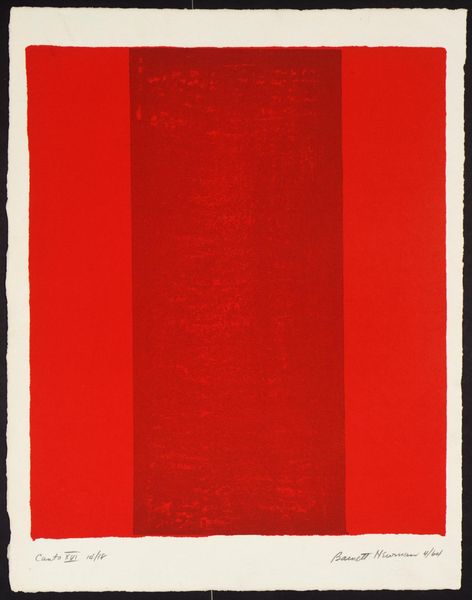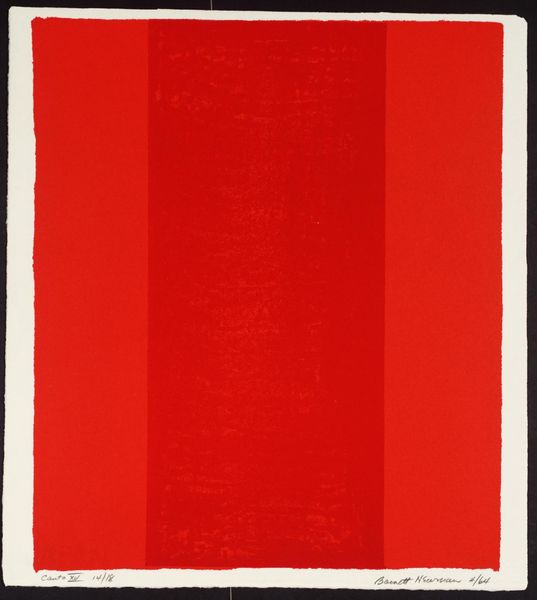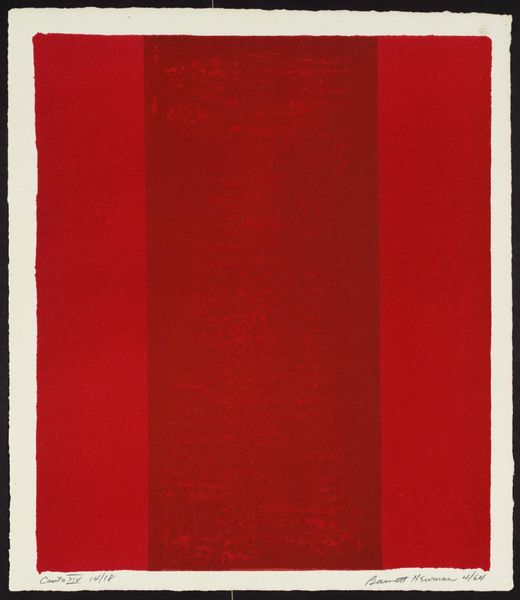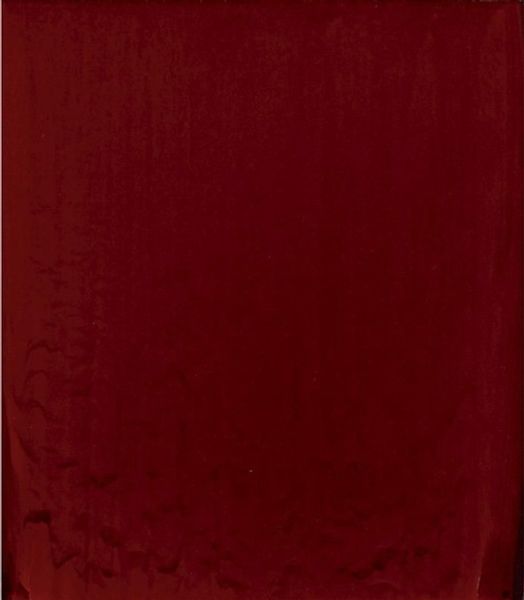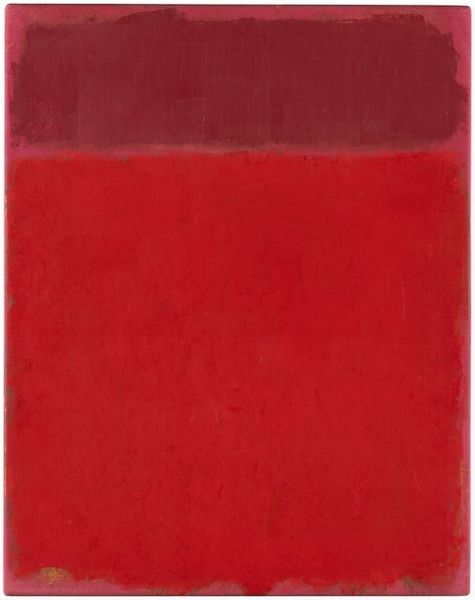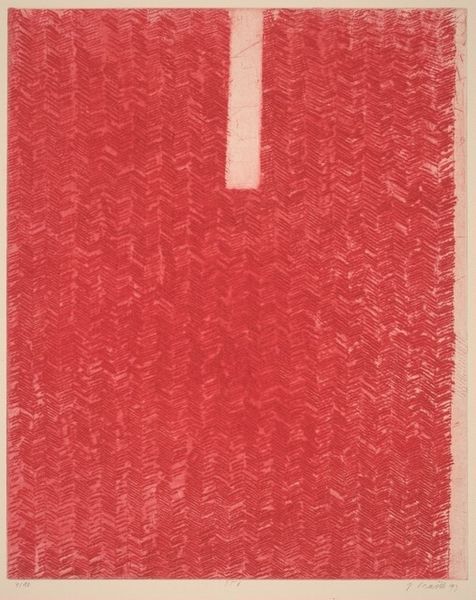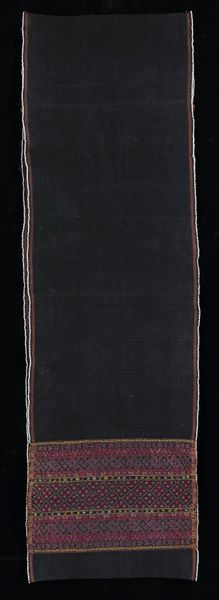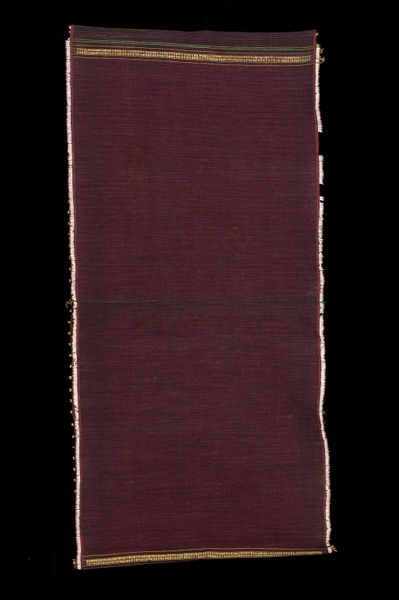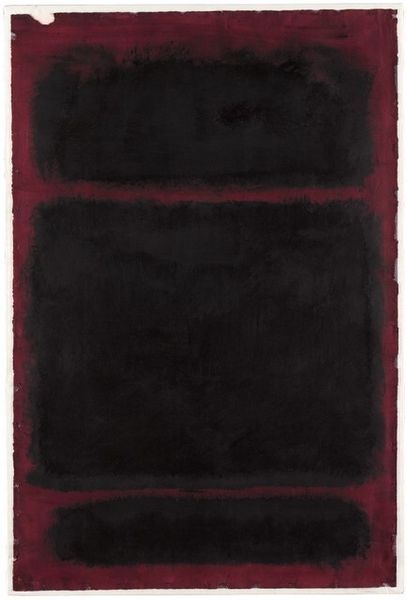
fibre-art, textile, cotton
#
fibre-art
#
asian-art
#
geometric composition
#
textile
#
geometric pattern
#
geometric
#
cotton
Dimensions: 96 x 20 in. (243.84 x 50.8 cm)
Copyright: Public Domain
Editor: So this cotton textile is titled "Man's Sash," from the 20th century, crafted by a Hmong artist. I’m struck by the strong red and geometric details at the bottom. What strikes you about this textile? Curator: I'm interested in the textile itself. The labor involved in its production – growing the cotton, spinning it into thread, dyeing it that vibrant red, and then the meticulous work of creating those geometric patterns. That's where meaning truly resides. Consider who would've had access to the dyes needed to achieve this shade and who possessed the skill, time, and social space for weaving and embroidery? Editor: That’s a good point. It wasn’t mass-produced; there’s a deliberate and laborious process visible. Does the geometric pattern hold significance in this cultural context? Curator: Absolutely, but let's consider the "how" alongside the "what". How were these patterns created? Were they passed down through generations? Were particular tools or looms used, and how did those tools shape the design? Thinking materially and historically reveals more than focusing just on symbolism, you see. Editor: That’s interesting; it's about looking at the work, literally, of making this object. So, this sash becomes more than just something to wear; it embodies a whole chain of actions and processes? Curator: Exactly! It’s a record of human intervention, from raw material to finished product. And those interventions are always shaped by the social and economic realities in which the textile was produced. It speaks volumes about the maker and the culture that sustains them. Editor: This reframes how I see fibre art. Thinking about it in terms of material culture helps me appreciate it on a much deeper level! Curator: Precisely. Considering these material conditions allows us to really understand the human element present within this Hmong sash.
Comments
No comments
Be the first to comment and join the conversation on the ultimate creative platform.
